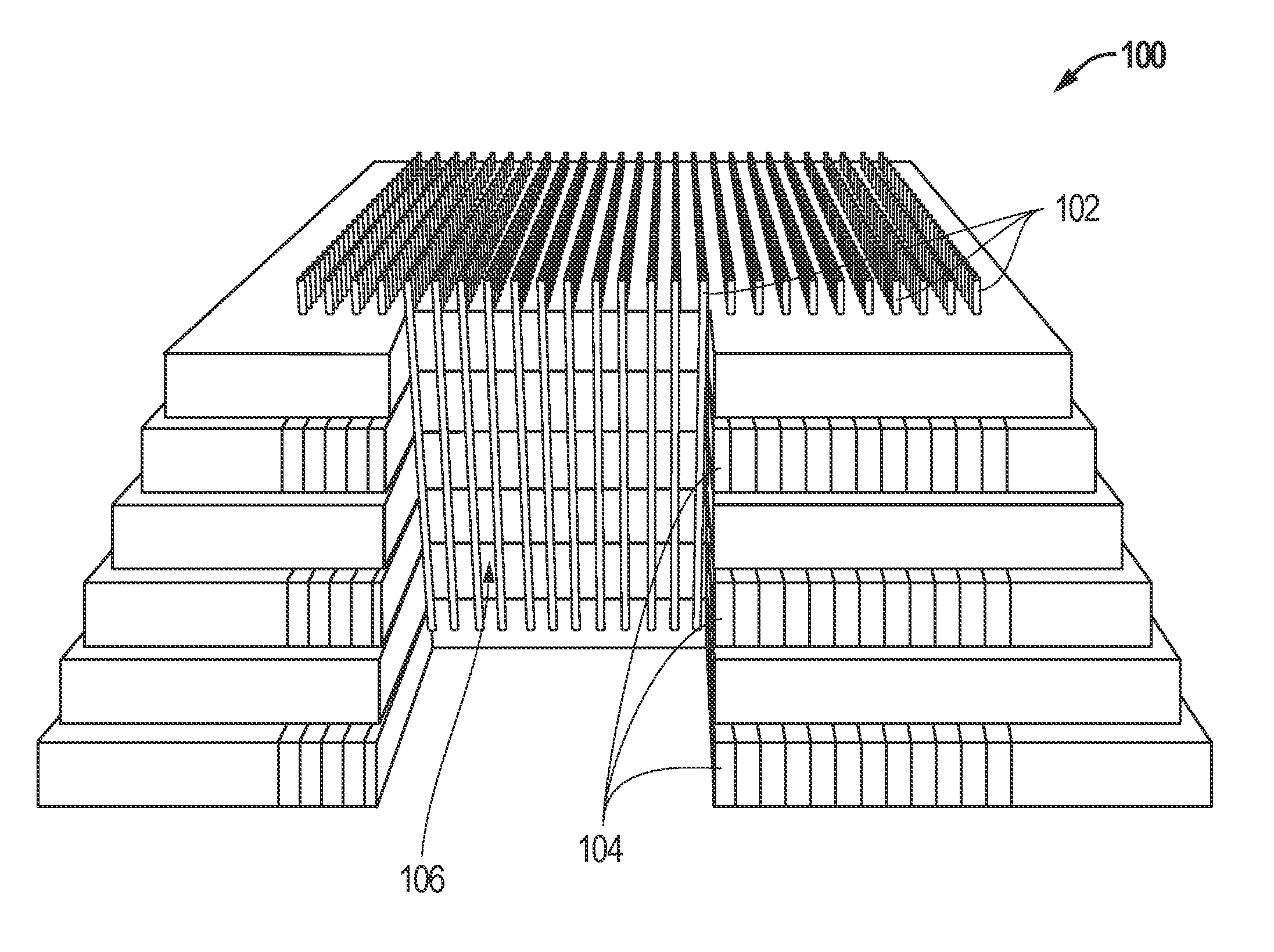Multidimensional Structural Access
a multi-dimensional, microscopic technology, applied in the testing/measurement of individual semiconductor devices, semiconductor/solid-state devices, instruments, etc., can solve the problems of difficult to measure, analyze and locate faults in 3d microscopic (including nanoscopic) structures, or the final access to the voi is either more complicated or impossible, so as to minimize the damage to the region
- Summary
- Abstract
- Description
- Claims
- Application Information
AI Technical Summary
Benefits of technology
Problems solved by technology
Method used
Image
Examples
Embodiment Construction
[0020]In one conventional analysis of two-dimensional processing, a region of interest is exposed by ion beam milling and electrical probes are contacted to the region of interest, typically from above. The region of interest can be viewed from above using an electron beam with voltage applied for voltage contrast imaging. This works well for 2D structures, but for newer structures having transistors or memory cells on many layers, it is very difficult to access the correct layer in the stack when one is looking at the structure from the top. In accordance with an aspect of some embodiments of the invention, the sample is milled and / or tilted so that multiple planes within the sample are exposed from a single perspective, typically from above, for imaging or probing.
[0021]Also, most prior art cross-sectional techniques are preformed through the region of interest, such as the particular failing part in a failure analysis. Due to the increased complexity of new 3D structures it is ad...
PUM
 Login to View More
Login to View More Abstract
Description
Claims
Application Information
 Login to View More
Login to View More - R&D
- Intellectual Property
- Life Sciences
- Materials
- Tech Scout
- Unparalleled Data Quality
- Higher Quality Content
- 60% Fewer Hallucinations
Browse by: Latest US Patents, China's latest patents, Technical Efficacy Thesaurus, Application Domain, Technology Topic, Popular Technical Reports.
© 2025 PatSnap. All rights reserved.Legal|Privacy policy|Modern Slavery Act Transparency Statement|Sitemap|About US| Contact US: help@patsnap.com



